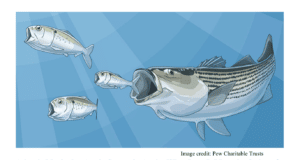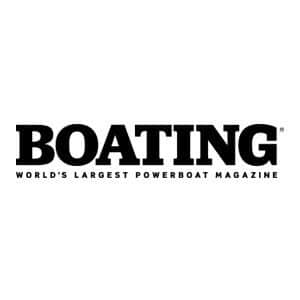Our test panel is suspended from the dock you see at the end of the street on the Google Maps image below.
Zoom in and you’ll see the dock. Zoom out and you’ll see it surrounded by a mix of residences, wetlands and agriculture. It’s a free-flowing tidal creek on Long Island, New York, 4.8 miles from the Atlantic Ocean at Shinnecock Inlet. Pretty “typical” middle-of-the-road fouling conditions, I think. The creek is fed by springs, and the confluence of fresh and salt makes for fecund waters in which both shell and plant fouling can thrive. The panel is suspended horizontally, on the south side of the dock, so it gets lots of sun.
Environmental Profile, Dave’s Creek, East Quogue, New York
•Salinity: approximately 30 parts per thousand (“estuarine”)
•Water temperature (average): June, 65 degrees F; August, 76 degrees F; October, 59 degrees F
•Tide range: 3.7 feet
Now, I know some of you are wondering why I didn’t just apply these coatings to different sections of a boat’s bottom for this test. Well, I’ll tell you. But first know that I did coat my Regulator 23 with Pacifica Plus, put Hydrocoat on a charter boat that I crew aboard, and covered the bottom of my trailered Boston Whaler 170 Montauk with Easy-On. I’ll post reviews of those individual tests after I haul the boats in late fall of this year.
Back to the reason I didn’t paint a single boat with multiple coatings … Solar rays enhance the growth of many types of fouling, particularly plants and slime. So if we were to paint one side of a boat bottom with Coating A and the other with Coating B, the side of the boat that gets the most sun would be tasked with thwarting more challenging fouling than the shady side would. It wouldn’t be a fair test.
Of course we could alternately dock the boat bow-to one week and stern-to the next, effectively alternating which side was blessed with Old Sol’s rays, but, to use a technical term, that’s a pain.
Another way is to paint the bottom like a quilt, that is, using two coatings: Paint the starboard bow and portside stern areas with Coating A and paint the port bow and starboard-side stern with Coating B. Look for me to use my Regulator as a “quilted” antifouling test platform next year.
Meanwhile, check out Part 6 to see how our three different flavors of antifouling are faring.
Click Here for Part 1
Click Here for Part 2
Click Here for Part 3
Click Here for Part 4
Click Here for Part 4a
Click Here for Part 5
Click Here for Part 6
Click Here for Part 7









